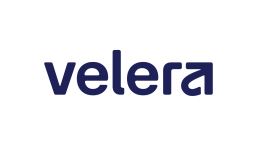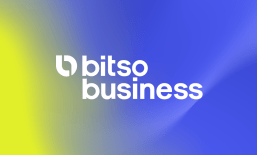According to one recent analysis, 91 publicly listed FinTech companies burned through $12 billion in venture capital in 2022, and just 17 posted a net profit from those investments.
If it sounds like a familiar story, then you’ve likely been through at least one market downturn in your career, so the cyclical nature of markets is something you’ve dealt with before. That so many companies burned so much cash and so few turned a profit shows that the growth at all costs mindset isn’t new. It often ends badly, and fixing it takes a pivot.
To that end, PYMNTS’ Karen Webster invited Sezzle CEO Charlie Youakim and Bond CEO Roy Ng to unpack the FinTech pivot to profitability, which is seen as the best path out of the current mess. As both have placed profitability at their center, they’re trendsetters for the next phase.
All agreed that part of the COVID startup problem was too many hopefuls trying to build an entire operation around a feature that had no chance of becoming a viable business.
That was Ng’s summary, as he said, “My observation is not just in FinTech, but in software and tech generally, there are a lot of companies that were started that probably were not going to be a long-term standalone business because of the business model and the economics over the long term. They’re more of a feature that may be additive to a broader solution set.”
Youakim sees it much the same, although he finds some upside to irrational exuberance.
Advertisement: Scroll to Continue
“One of the big benefits of cheap capital is that you get a lot of founders taking big swings at testing whether or not something’s a feature or a business,” he said. It’s often not a viable business, but his point is that the ideation from these periods can feed innovation later.
“There are pros and cons, and the key is transitioning [between] time periods,” he said. “That’s the hardest part right now.”
This isn’t Ng’s first rodeo either, having ridden out the dot com bust as an investment banker with Goldman Sachs and the housing market collapse at software firm SuccessFactors. With that background, he focused embedded finance firm Bond on profitable growth before it caught on — too late for many — as Youakim did with BNPL firm Sezzle, both with good results.
They did it by asking customers (and themselves) what value they were delivering.
Read: FinTech Cash Burn Totaled $12 Billion in 2022
Pressure Makes Diamonds
The foundational notion of achieving profitable growth by delivering genuine value to users and customers is what these two companies in very different sectors have in common. Accordingly, their pivot to profitability was already underway when talk of bloated valuations heated up.
For FinTechs now crashing and burning, Ng said most never defined what being truly profitable means in practice, so they pushed on with costly customer acquisition and overlarge teams.
He said, “Tighter market environments force companies to take a hard look at [whether] those growth areas are the growth areas I want to be in. Are those businesses long term going to be a business, or, to our discussion earlier, are they features?”
This is where bitter experience is a benefit. Youakim said the COVID bounce that pushed eCommerce to unheard-of highs, for example, gave a lot of younger founders the wrong idea. “Some founders that are probably younger and less experienced think that’s going to just snap back,” he said.
“I think it’s going to come back, but it’s not going to be a snap-back. We’re going to see a slow, gradual return. But I also feel like the tide going out has left some people without shorts. People have been exposed, and now it’s hard to get backers again.”
As much as they agree on upcycles and downturns, the two don’t see the eventual recovery the same. From Ng’s perspective, “This is probably a little bit more benign than that of the great financial crisis in the 2000s.” Youakim countered, “I think it’s going to be a tougher time for some of these companies to recover. I’m a little bit more pessimistic than Roy on this one.”
Ng sensed a change in the market early in 2022 and decided to “flatten” the organization, eventually laying off about 22% of his workforce and getting obsessive about value. “We were early in doing that, and it was a pretty meaningful adjustment,” he said.
“The aha moment for me is that more people or resources don’t equate to more outcomes, so to speak,” he added. “Our biggest quarters were when the team was actually smaller than when we had a larger team. It’s kind of counterintuitive, but that’s at least my experience.”
See also: The Eight Trends That Will Shape Payments, Retail, and the Digital Economy in 2023
Recovery Road
Meanwhile, in the ghost town that Silicon Valley is being portrayed as, deals are getting done, especially seed rounds, and companies continue to plan initial public offerings (IPOs), albeit more cautiously.
Again, Ng’s viewpoint diverges from Youakim’s in that he’s optimistic about this recovery.
In 2007, “you were talking about big banks like Citi about to collapse. That’s a different thing from COVID-induced inflation,” Ng said. “It’s still a problem, but when you kind of compare in relative terms, I think this is something that the market will get over. But I agree with Charlie. It’s not going to be a V-shaped recovery.”
What may hold back the recovery is being overcautious. That’s Youakim’s opinion, at least.
“I do think that the good money going after bad companies has stopped, almost to a fault. The pendulum swings both ways. Two years ago, we had good money going into bad companies, but at the same time, going to good companies, a lot of times in the same sectors. I think now we’re seeing the reverse.” He added that it is a good time to buy valuable intellectual property at bargain prices.
Asked about the toughest decision he’s faced in the current market, Ng said it’s keeping a positive team and culture sustained through the cutbacks and bad news. Thinking back to the hiring frenzy of 2021, he said, “The mindset was very different from a people management standpoint because it was so hard to recruit and retain people. To have to make changes, for me it is not just the act itself, but how does it affect culture?”
Youakim had to cut his team almost in half, but from that leaner operation is coming more of a personal sense of entrepreneurship and engagement from the staff. Sometimes less is more, and, as Webster added, it’s easier to be profitable when the fundamentals are in place.



